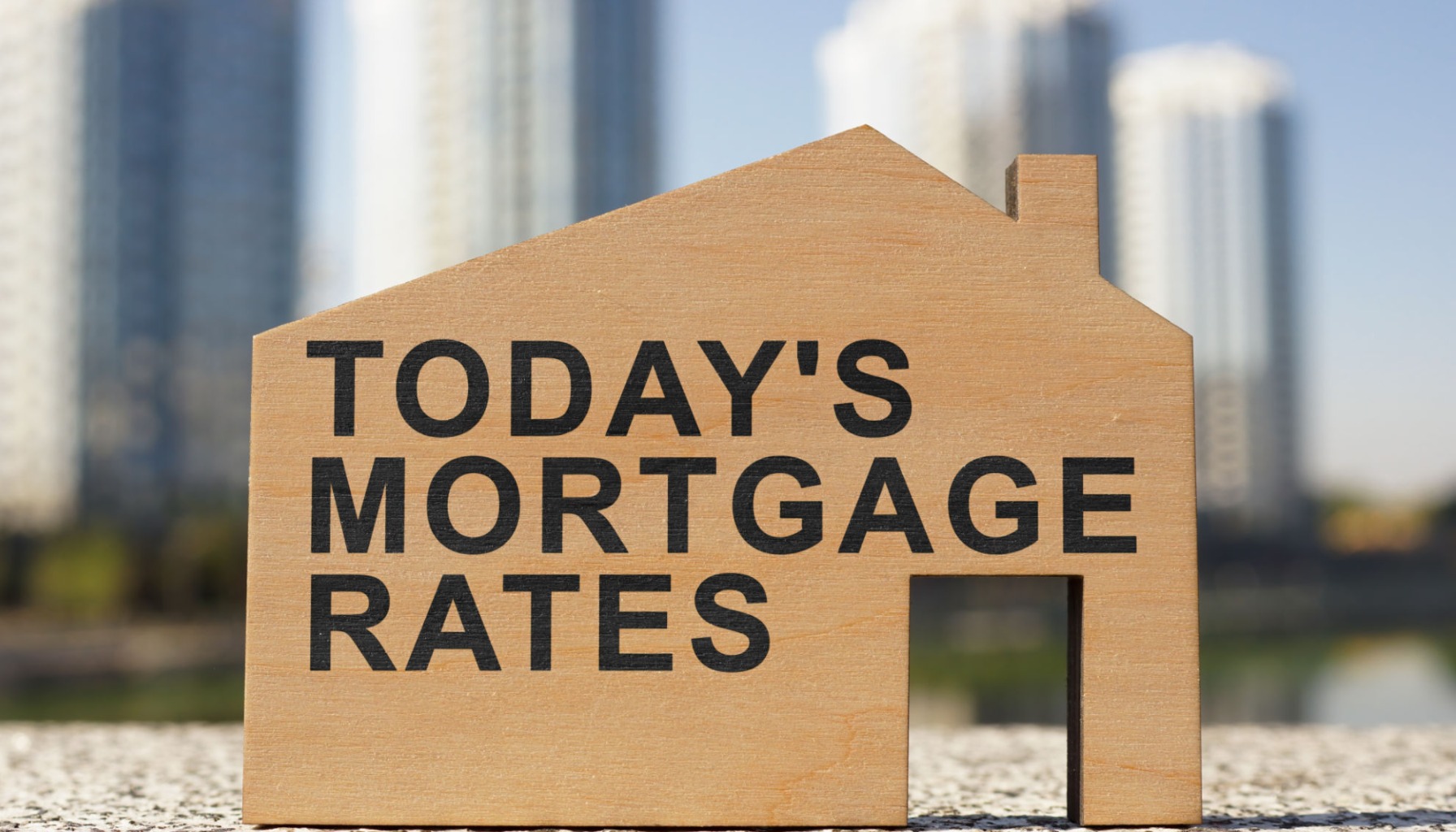If you're thinking about buying a home or refinancing your current mortgage, understanding where mortgage rates stand and who benefits the most is crucial. Currently, those who are prepared to buy or refinance, particularly those who can secure a fixed-rate loan, are in a favorable position. However, the picture is more complex, with specific groups seeing greater advantages.
Who Benefits Most from Today's Lower Mortgage Rates in 2025?
It feels like just yesterday we were obsessing over whether mortgage rates would ever dip below 7%, and then we saw them touch the 6% range. Now, as of the week of November 13th, 2025, according to Freddie Mac's Primary Mortgage Market Survey®, the 30-year fixed-rate mortgage is sitting at 6.24%, and the 15-year fixed-rate mortgage is at 5.49%. These rates are broadly flat compared to the week before, but they represent a significant drop from a year ago. For the 30-year mortgage, that's a decrease of 0.54% from the previous year! The 15-year rate has also dropped by 0.5% in the same timeframe.
This stability, combined with a potential uptick in purchase activity, is a welcome sign for many. But who really wins when rates are in this zone? It's not a simple one-size-fits-all answer. My experience in this market tells me it's about timing, financial health, and your specific housing goals.
The Savvy Buyer: Locking in a Lower Payment
Let's start with the most direct beneficiaries: potential homebuyers. If you've been patiently waiting for rates to cool down before jumping into the housing market, this is your moment.
- Lower Monthly Payments: A lower interest rate directly translates to a lower monthly mortgage payment. Imagine putting that saved money towards other financial goals, home improvements, or even just easing your overall budget.
- Increased Buying Power: With lower rates, you can potentially afford a more expensive home for the same monthly payment you might have budgeted for a higher rate. For instance, a $300,000 loan at 7% will have a higher principal and interest payment than the same loan at 6.24%. This difference can be substantial over 30 years.
Consider this from Freddie Mac's data: the 30-year fixed-rate mortgage averaging 6.24% is lower than the 52-week average of 6.67%. This means that if your offer is accepted now, you're likely getting a better rate than the average seen over the past year.
The Refinancer: Trimming Expenses and Accessing Equity
If you're already a homeowner, today's mortgage rates also present a golden opportunity to refinance your existing mortgage.
- Reduce Your Interest Costs: If you have a mortgage with an interest rate significantly higher than the current market rates (say, you locked in at 7% or 8% a couple of years ago), refinancing into a lower rate can save you thousands of dollars over the life of your loan.
- Change Your Loan Term: Perhaps your financial situation has improved, and you want to pay off your mortgage faster. Refinancing into a 15-year fixed-rate mortgage at 5.49% (compared to a 30-year at 6.24%) could drastically reduce your loan term and the total interest paid, although your monthly payment will likely increase due to that shorter term.
- Cash-Out Refinance: For some homeowners, these rates might make sense to tap into their home's equity. If you need funds for renovations, education, or debt consolidation, a cash-out refinance can provide that capital, potentially at a better rate than other forms of borrowing.
New Construction Shoppers: Leveraging Builder Incentives
The data from the Mortgage Bankers Association (MBA) for October 2025 offers an interesting insight: while purchase applications for new homes decreased year-over-year and month-over-month, the sales pace was actually the strongest in over a year! This seems like a contradiction, but it’s a nuanced picture.
Joel Kan, MBA’s Vice President and Deputy Chief Economist, points out that “lower mortgage rates, ongoing usage of builder concessions, and growing levels of for-sale inventory drove an increase in new home sales.” This is where the real benefit lies for new home buyers. Builders are motivated to sell!
- Builder Concessions: To move inventory, builders often offer incentives like paying closing costs, offering rate buy-downs (effectively lowering your interest rate for a period, or even permanently), or providing upgrades. These concessions can significantly reduce the upfront costs and the overall expense of buying a new home.
- ARM Loans: Kan also noted a significant increase in the use of Adjustable-Rate Mortgages (ARMs), which were averaging almost 80 basis points lower than fixed-rate loans. While ARMs come with their own risks (rates can go up), if a buyer plans to sell or refinance before the initial fixed period ends, or if they are very comfortable with potential future rate adjustments, this can be a way to get an even lower initial rate on a new build. According to the MBA, ARMs accounted for 25% of applications in October 2025, up from 16% a year ago.
This suggests a strategic buyer looking at new construction can negotiate hard, especially if they are willing to explore options like ARMs or take advantage of builder-provided rate buy-downs. The MBA’s data shows new single-family home sales running at a seasonally adjusted annual rate of 771,000 units in October 2025, the strongest pace in over a year! That’s a pretty encouraging sign for the new home market, and it indicates builders are working hard to make deals happen.
The Investor: Strategic Opportunities
For real estate investors, today's mortgage rates can be a mixed bag, but they certainly create opportunities.
- Lower Acquisition Costs: Just like a primary homeowner, investors can benefit from lower borrowing costs when purchasing investment properties. This can improve their potential cash flow and return on investment.
- Refinancing Investment Portfolios: Investors with existing investment properties carrying higher-rate mortgages might find it advantageous to refinance. Lowering the interest rate on multiple properties can free up significant capital.
- Calculated Risks: Savvy investors closely watch interest rate trends and economic indicators. While stability is good, they also understand that rates can fluctuate. They might be looking to lock in current rates on properties that fit their long-term strategy, anticipating future appreciation or rental income growth.
Who Might Wait or Be Less Benefited?
While many benefit, it's important to acknowledge that not everyone is in a prime position.
- First-Time Buyers with Tight Budgets: Even with rates in the 6% range, the combination of home prices and mortgage payments can still be a hurdle for those with very limited savings or lower incomes. Affordability remains a key concern for this group.
- Those Needing to Move Urgently: If you must buy or sell due to life circumstances and don't have the luxury of waiting for optimal rates, you might feel less of a benefit. However, as we’ve seen, even if rates aren't at their absolute lowest, they are still more favorable than they have been recently.
- Cash Buyers: For those purchasing outright with cash, mortgage rates are largely irrelevant. Their benefits come from market conditions, property values, and negotiation power, not interest rates.
Related Topics:
Mortgage Rate Predictions for the Next 30 Days: Nov 10 to Dec 10, 2025
Mortgage Rates Predictions for the Next 12 Months: Nov 2025 to Nov 2026
Mortgage Rates Predictions for Next 90 Days: October to December 2025
My Take: Preparation is Key
From my perspective, the current mortgage rate environment rewards those who are financially prepared and have done their homework. This means:
- Good Credit Score: This is paramount. The better your credit score, the lower the interest rate you'll qualify for. Even a small difference in your rate can save you tens of thousands of dollars over 30 years.
- Solid Down Payment: A larger down payment not only reduces the amount you need to borrow but can also help you avoid Private Mortgage Insurance (PMI), saving you more money.
- Pre-Approval: Getting pre-approved for a mortgage before you start house hunting gives you a clear understanding of your budget and makes your offer stronger.
The fact that purchase activity is up and new home sales are strong suggests that despite some challenges, buyers are finding ways to make it work. The rates being offered now are a significant improvement over what we've seen in the recent past, making homeownership more attainable for many.
The data from Freddie Mac indicates rates are stable, giving potential buyers and refinancers a chance to act without feeling rushed by rapidly increasing costs. The MBA’s report on new homes shows that while application numbers can fluctuate, the underlying sales activity, often boosted by builder incentives, is robust.
Ultimately, those who benefit most from today’s mortgage rates are those who are ready to seize the opportunity. Whether you're a first-time buyer, looking to upgrade, or a homeowner considering a refinance, now is a great time to explore your options.
Want Stronger Returns? Invest Where the Housing Market’s Growing
Turnkey rental properties in fast-growing housing markets offer a powerful way to generate passive income with minimal hassle.
Work with Norada Real Estate to find stable, cash-flowing markets beyond the bubble zones—so you can build wealth without the risks of ultra-competitive areas.
🔥 HOT NEW LISTINGS JUST ADDED! 🔥
Talk to a Norada investment counselor today (No Obligation):
(800) 611-3060
Also Read:
- Mortgage Rates Predictions Backed by 7 Leading Experts: 2025–2026
- Mortgage Rate Predictions for the Next 3 Years: 2026, 2027, 2028
- 30-Year Fixed Mortgage Rate Forecast for the Next 5 Years
- 15-Year Fixed Mortgage Rate Predictions for Next 5 Years: 2025-2029
- Will Mortgage Rates Ever Be 3% Again in the Future?
- Mortgage Rates Predictions for Next 2 Years
- Mortgage Rate Predictions for Next 5 Years
- Mortgage Rate Predictions: Why 2% and 3% Rates are Out of Reach
- How Lower Mortgage Rates Can Save You Thousands?
- How to Get a Low Mortgage Interest Rate?
- Will Mortgage Rates Ever Be 4% Again?



